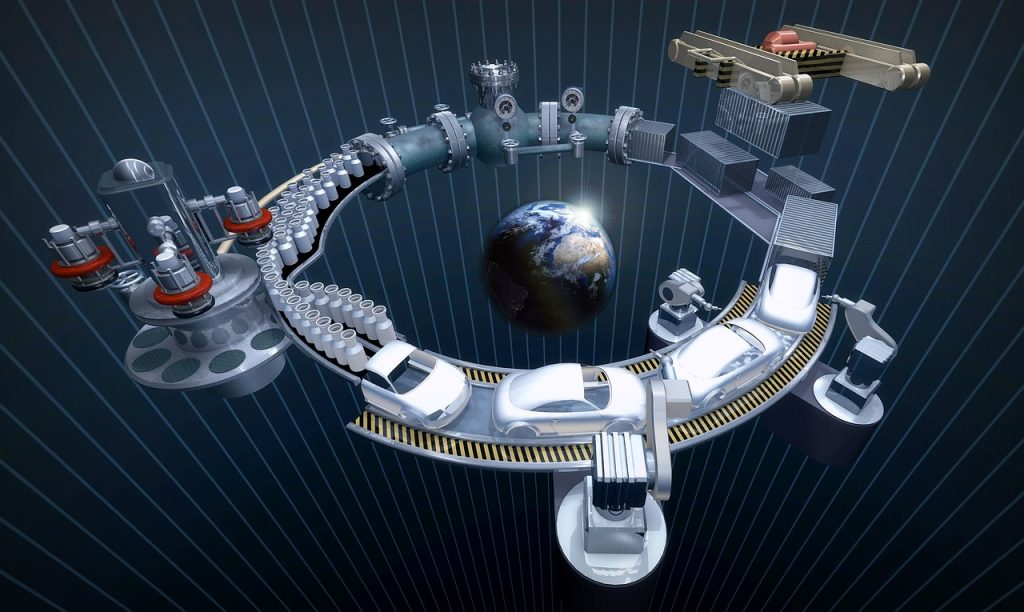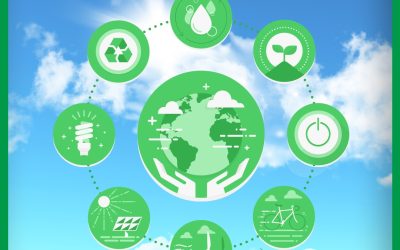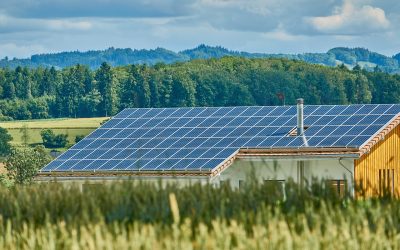So you know the struggle of dealing with energy shortages during peak hours? Well, there’s good news for you! There’s a revolutionary solution on the horizon that’s set to decrease the load on the energy grid. This article will give you a brief overview of this innovative concept that aims to tackle the growing energy demands and ensure a more reliable and sustainable power supply for all. Say goodbye to the frustrating power outages and hello to a more efficient energy system.
Smart Energy Management Systems
Smart energy management systems play a crucial role in effectively reducing energy consumption and optimizing the use of available resources. By integrating smart meters, households and businesses can have real-time insights into their energy consumption patterns. This enables better monitoring and control of energy usage, allowing for more efficient energy management. With the ability to track energy consumption in detail, users can identify areas of high energy usage and make informed decisions to reduce their carbon footprint.
Demand Response programs are another integral part of smart energy management systems. These programs encourage consumers to reduce or shift their electricity usage during peak demand periods. By voluntarily adjusting their energy consumption during these periods, consumers can contribute to the stability of the energy grid. This reduces the need for additional power generation during peak demand, decreasing the strain on the energy grid and potentially avoiding blackouts or system failures.
Energy efficient appliances are a key component of smart energy management systems. These appliances are designed to operate with minimal energy usage while maintaining optimal performance. By replacing outdated or inefficient appliances with energy-efficient alternatives, consumers can significantly decrease their energy consumption. This not only saves them money on their utility bills but also reduces the overall demand for energy, resulting in a more sustainable and resilient energy grid.
Renewable Energy Sources
The integration of renewable energy sources is paramount in the transition towards a greener and more sustainable energy future. Solar power harnesses the energy from the sun to generate electricity, while wind power utilizes wind turbines to convert wind energy into usable electrical power. These clean energy sources are abundant, inexhaustible, and produce minimal greenhouse gas emissions, making them ideal alternatives to traditional fossil fuel-based power generation methods. By incorporating solar and wind power into the energy grid, we can significantly reduce our dependence on fossil fuels and decrease the environmental impact associated with energy generation.
Hydropower, another prominent renewable energy source, utilizes the power of flowing or falling water to generate electricity. Hydroelectric power plants can be installed in rivers, dams, or other water bodies, and they provide a reliable and consistent source of renewable energy. Unlike solar and wind power, hydropower can provide baseload power, meaning it can generate a constant supply of electricity, making it an essential component of a sustainable and resilient energy grid.

Energy Storage Solutions
Energy storage solutions are paramount in addressing the intermittency of renewable energy sources and ensure a stable and reliable energy supply. Battery storage systems have gained significant attention in recent years due to their ability to store excess electricity for later use. These systems can be integrated with renewable energy sources, such as solar panels, allowing for the capture and storage of energy generated during periods of low demand. This stored energy can then be utilized during peak demand times or when renewable energy generation is insufficient.
Pumped hydro storage is another effective energy storage solution that utilizes excess electricity to pump water from a lower reservoir to a higher one. When demand for electricity is high, the stored water is released, flowing downhill and powering turbines to generate electricity. This method of energy storage has been proven to be highly efficient and reliable, providing a flexible means of storing large amounts of energy.
Thermal energy storage involves capturing excess heat or cold and storing it for later use. This can be achieved through various methods, such as storing heated or cooled water, molten salt, or even through the use of phase change materials. By storing thermal energy, it becomes possible to utilize it during periods of high energy demand, reducing the need for additional energy generation and improving overall grid efficiency.
Energy Conservation Techniques
Energy conservation techniques aim to minimize energy wastage and improve overall energy efficiency. Insulation and weatherization measures involve properly sealing buildings to prevent unwanted heat gain or loss. By insulating walls, roofs, and windows, less energy is required to heat or cool the building. Additionally, weatherstripping and caulking can prevent air leaks, further reducing energy loss.
LED lighting is an energy-efficient alternative to traditional incandescent or fluorescent lighting. LEDs consume significantly less energy, have a longer lifespan, and produce less heat. By replacing outdated lighting fixtures with LED bulbs, households and businesses can achieve substantial energy savings while enjoying high-quality lighting.
Energy-efficient heating, ventilation, and air conditioning (HVAC) systems focus on optimizing the energy usage of temperature control systems. This includes the use of programmable thermostats, efficient heating and cooling equipment, and regular maintenance to ensure optimal performance. By implementing energy-efficient HVAC systems, significant energy savings can be achieved, resulting in reduced energy costs and decreased strain on the energy grid.

Distributed Energy Generation
Distributed energy generation refers to the generation of electricity at or near the point of consumption, rather than relying solely on centralized power plants. Microgrids are small-scale energy systems that can operate independently or in cooperation with the larger energy grid. By incorporating various energy sources, such as solar panels, wind turbines, and energy storage, microgrids provide localized, reliable, and sustainable electricity supply. In situations where the main power grid experiences disruptions, microgrids can continue to provide power to critical services or communities.
Combined Heat and Power (CHP) systems, also known as cogeneration, simultaneously generate both electricity and usable heat from a single fuel source. CHP systems can be used in various applications, including industrial sites, hospitals, and universities, to maximize the usage of fuel and reduce energy waste. By utilizing waste heat from the electricity generation process, these systems increase overall energy efficiency, resulting in significant energy savings.
Renewable energy generators, such as rooftop solar panels or small wind turbines, contribute to distributed energy generation by allowing individual households or businesses to generate their own electricity. These generators are typically connected to the main power grid, allowing excess electricity to be supplied back to the grid when generation exceeds consumption. This not only offsets the consumer’s electricity bill but also contributes to a more decentralized and resilient energy grid.
Time-of-Use Pricing
Time-of-Use (TOU) pricing structures incentivize consumers to shift their electricity usage to off-peak hours when energy demand and prices are lower. By implementing peak and off-peak pricing, electricity rates can reflect the actual cost of generating and delivering power at different times of the day. This encourages consumers to reduce their energy consumption during peak demand periods, indirectly decreasing the load on the energy grid.
Incentives for off-peak usage can further motivate consumers to adjust their energy consumption habits. This can include lower electricity rates during off-peak hours or special promotions and discounts for using energy-intensive appliances or charging electric vehicles during designated periods. By providing tangible benefits to consumers for shifting their energy usage patterns, TOU pricing can effectively reduce strain on the energy grid and promote more sustainable energy practices.
Smart charging for electric vehicles is a specific application of TOU pricing that aims to optimize the charging of electric vehicles (EVs). By implementing smart-charging solutions, EV owners can program their vehicles to charge during off-peak hours when electricity rates are lower. This not only benefits the EV owner by reducing charging costs but also allows for a more balanced distribution of electricity demand, decreasing the load on the energy grid during peak hours.

Grid Modernization
Grid modernization involves the integration of advanced technologies and infrastructure to improve the reliability, efficiency, and resiliency of the energy grid. Advanced meters and sensors provide real-time data on energy consumption and grid performance. This information enables utilities and consumers to make informed decisions regarding energy usage, demand response programs, and grid maintenance and optimization.
Grid automation involves the use of intelligent systems and algorithms to control and monitor grid operations. This includes automated fault detection and isolation, real-time grid balancing, and the ability to reroute power during outages. By automating grid operations, utilities can minimize downtime, enhance the stability of the grid, and ensure a faster response to potential issues.
The integration of distributed resources, such as renewable energy generators and energy storage systems, is another vital aspect of grid modernization. By incorporating decentralized energy sources into the grid, utilities can reduce transmission losses, improve grid reliability, and facilitate the integration of clean energy sources. This transition towards a more distributed energy system enhances grid resilience, allowing for better adaptation to changing energy needs and environmental conditions.
Energy Efficiency Standards and Labels
Energy efficiency standards and labels play a crucial role in guiding consumers towards energy-efficient products and appliances. The Energy Star certification is a widely recognized label that identifies products that meet high energy efficiency standards. Products with the Energy Star label consume significantly less energy compared to conventional models, leading to lower energy bills and reduced environmental impact.
Ecolabels for appliances denote products that have undergone rigorous testing and meet stringent environmental and performance criteria. These labels consider various factors, including energy efficiency, resource conservation, and lifecycle impacts. By choosing appliances with recognized ecolabels, consumers can contribute to sustainable consumption practices and support the development of more environmentally friendly products.
Minimum Energy Performance Standards (MEPS) set the minimum efficiency requirements for various appliances and equipment. MEPS ensure that only energy-efficient products can be sold in the market, driving manufacturers to improve the energy performance of their products and reducing energy waste. By adhering to MEPS, consumers can have confidence that the appliances they purchase meet the necessary energy efficiency criteria.
Energy Education and Awareness
Consumer education programs are essential in raising awareness about energy conservation and sustainable practices. These programs provide consumers with the necessary knowledge and tools to make informed decisions regarding energy usage and efficiency. Through workshops, online resources, and community outreach initiatives, consumers can gain a better understanding of their energy consumption patterns and learn about practical strategies to reduce energy waste.
Awareness campaigns play an integral role in engaging and motivating individuals to adopt energy-saving practices. These campaigns often utilize various media platforms, such as television, social media, and public service announcements, to communicate the importance of energy conservation and empower individuals to take action. By highlighting the benefits of energy efficiency and presenting it as a collective responsibility, awareness campaigns can inspire widespread behavior change and promote a culture of sustainable energy use.
Energy-saving tips and guidelines serve as practical guides for consumers to implement energy-efficient practices in their daily lives. These tips can cover a range of topics, including energy-efficient lighting, smart energy usage, and reducing standby power consumption. By providing clear, actionable steps, individuals can easily incorporate energy-saving habits into their routines, leading to long-term energy savings and reduced strain on the energy grid.
Government Policies and Regulations
Government policies and regulations play a crucial role in driving energy efficiency and promoting the adoption of renewable energy sources. Energy efficiency mandates require individuals, businesses, and industries to meet specified energy consumption targets. These mandates incentivize the implementation of energy-saving measures and technologies, encouraging entities to prioritize energy efficiency and reduce their environmental impact.
Renewable portfolio standards (RPS) establish targets for the percentage of electricity generated from renewable sources. Utilities are typically required to meet these targets by either generating renewable energy or purchasing Renewable Energy Certificates (RECs) from renewable energy producers. RPS provide a clear roadmap for utilities to transition towards cleaner energy sources, increasing the share of renewable energy in the overall energy mix.
Net metering policies allow individuals or businesses with renewable energy systems, such as solar panels, to sell excess electricity back to the grid. Under these policies, the energy generated by the renewable energy system is subtracted from the consumer’s electricity bill. Net metering incentivizes the installation of renewable energy systems and promotes the development of distributed energy generation, contributing to a more resilient and sustainable energy grid.
In conclusion, the implementation of smart energy management systems, integration of renewable energy sources, adoption of energy storage solutions, implementation of energy conservation techniques, promotion of distributed energy generation, utilization of time-of-use pricing, grid modernization, establishment of energy efficiency standards and labels, energy education and awareness initiatives, and the enactment of favorable government policies and regulations all contribute to decreasing the load on the energy grid. Collectively, these measures drive the transformation towards a more sustainable, reliable, and efficient energy future, benefiting both individuals and society as a whole. By embracing these strategies and technologies, we can pave the way towards a greener and more sustainable future.










